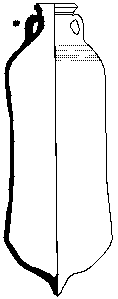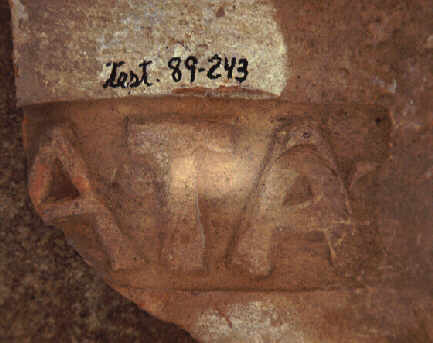 |
EXPORTS FROM NORTH AFRICA |
 |
EXPORTS FROM NORTH AFRICA |
From Augustus age and basically from late first century A.D., the North African provinces started exporting a great amount of agricultural surplus (grain, wine, olive-oil) as well as pottery.
Map of central Mediterranean showing producers areas of northern Africa
, types of amphora and principal routes between Africa and Rome




Africana I Africana II Tripolitana I Tripolitana III
African amphorae: African I and III, Tripolitan I and III
This process intensified in the second and third centuries A.D. and chiefly in the Late Empire when the African producers ruled over the Mediterranean and their goods could be found all over Europe.
The exports of foodstuff facilitated the diffusion of cooking wares and tablewares (African terra sigillata). These wares were made in urban and rural kilns together with amphoras, and they were distributed through the same commercial routes.
African amphoras represent the 15-17% of the total amphoras found in the Mount Testaccio. It can be said, as we know that 80% are Baetican, that the remaining ones 3-5% are containers for Gallic or Italic wine, vessels for Southern Spanish garum and oriental amphoras.African amphoras are very different from the Baetican ones in shape and shows an enormous variety since they were made in different areas and provinces. Excavations at Testaccio have made possible to identify amphoras from the proconsular area of Bizacena (African IA and B and African II forms), from the Tripolitana (Tripolitan I, II and III forms) and from Mauritania Caesariensis. Most of them were olive-oil amphoras. Their epigraphy is complex, similar to Baetican but less common and easy to read.

Stamp on the neck of a
tripolitan amphora [...]ATA
The identification of these landlords shows the existence of an African urban elite, which appears from the end of the second century A.D. and it is related to the African emperors and relatives. One special case is the Mauritanian amphoras, whose names identify known cities. The provinces to which they belonged were also written on them.
Painted inscriptions on African amphoras are one of the novelties of the 1993 season of excavation because nothing was known about them before, neither about its structure nor evolution.

Painted inscriptions with red ink
on the neck of a tripolitana amphora: QSMS.
It’s possibly one of a shortened tria nomina of the mercator
Shortened tria nomina with its initials and large signs written in red along with numerical inscriptions in black and red.